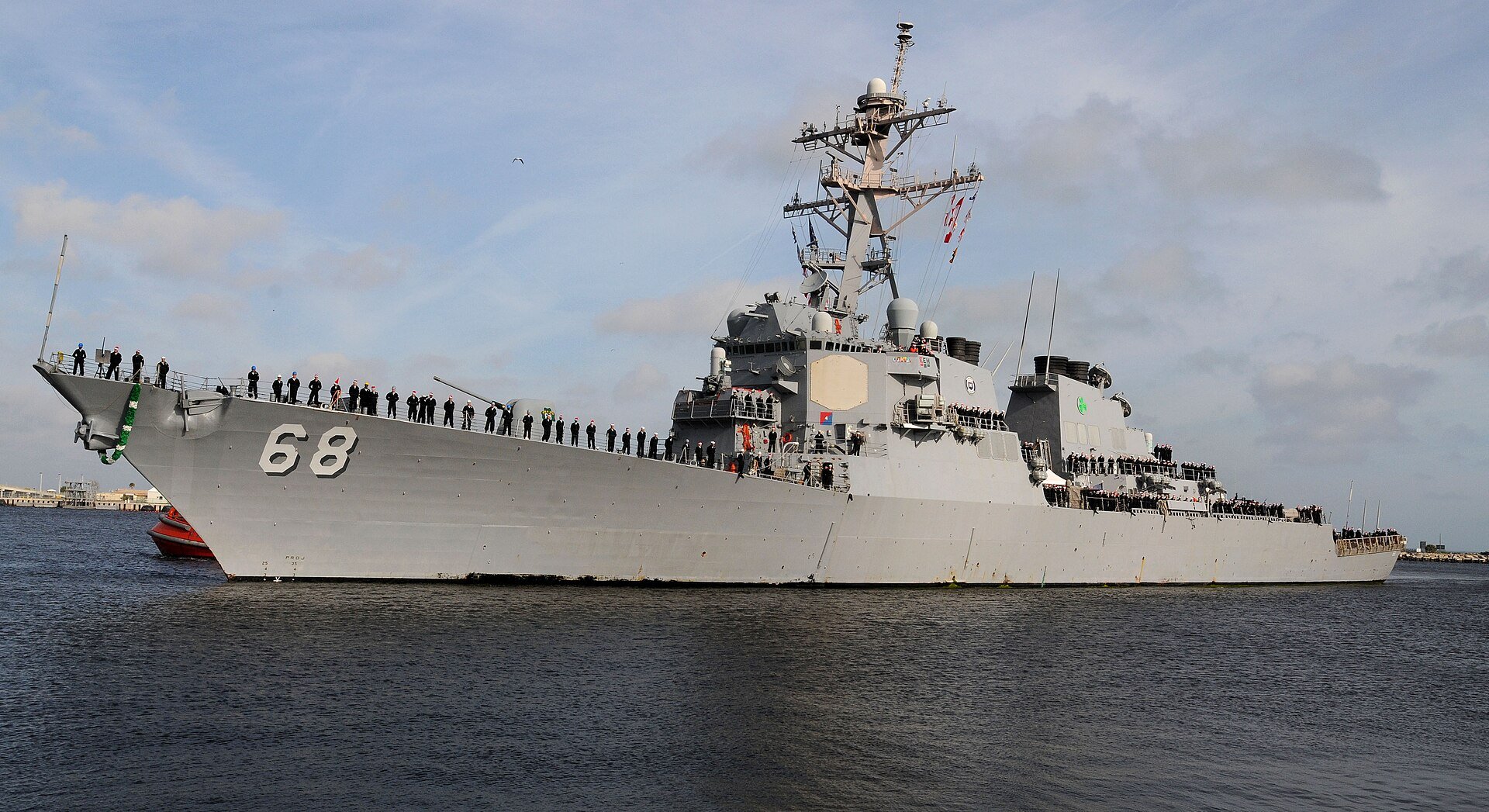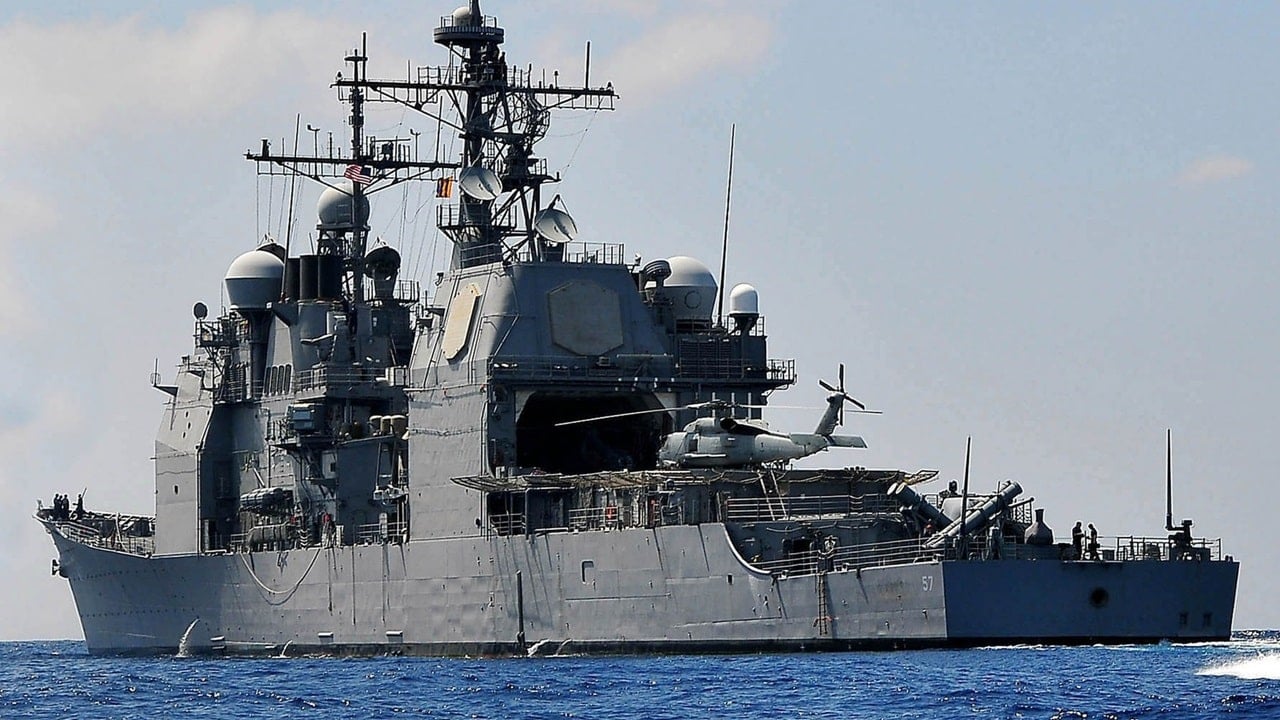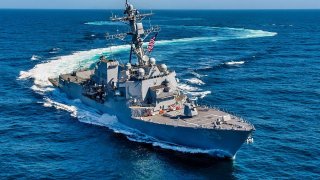Is the Era of Big Navy Warships Really Over Afterall?
Is the era of “Big Warships” over? Scholars have made this claim, as Tom Barnett did twenty years ago in The Pentagon’s New Map, yet reality defies speculation and facts on the water.
Brandon Weichert’s essay “The Era of Large US Navy Warships is all Done Now” applies equally well—if not better—to China. In fact, it is China that has arguably invested in a “useless” Blue Water Navy composed soon—by 2025—of 400 large surface warships. China is potentially the biggest loser. Not the United States.

Is the era of “Big Warships” over? Scholars have made this claim before, like Tom Barnett did twenty years ago in The Pentagon’s New Map, yet reality continues to defy speculation. Big ships can do big things, things smaller ships like the LCS (Littoral Combat Ship, but widely criticized as the “Little Crappy Ship”) clearly just can’t do.
Plus, once a nuclear-powered ship—like the U.S. Navy’s eleven aircraft carriers—is fueled up and ready to go, with a twenty-to-twenty-five-year nuclear charge, you might as well use them. Letting them sit idly by unused in port does nobody any good. By contrast, China’s three aircraft carriers all run on diesel engines, so every time they leave port they cost a fortune to operate. By one estimate, a diesel carrier gets just six inches to a gallon of diesel, hardly a bargain.
The real question is not whether you use “Big Warships” but where you use them. In 1890, Alfred Thayer Mahan pointed out that "reliable egress to the sea" was a necessity for any up-and-coming sea power. Most of China’s coastline is cluttered with islands—over 5,000 of them—making these highly restricted seas.
A big warship is just one big target in restricted seas, as China quickly discovered during most of its nineteenth-century naval wars, including most importantly during the First Sino-Japanese War (1894-1895) where it lost an entire fleet. So long as big warships stay in big water—such as the Pacific Ocean covering 30 percent of the planet—then they tend to do just fine. Nobody knows exactly where they are.
It is true that the maritime world has now changed forever. Anti-ship missiles and maritime drones—like the ones the Ukrainians have recently built and successfully used—can now wipe out large surface ships. Moskva, the flagship of the Russian Navy's Black Sea Fleet, was sunk by Ukrainian forces on April 14, 2022. But you must find them first. Virtually all 400 Chinese warships are based in Chinese ports. We know exactly where they are. They cannot be dispatched to be used in battle without satellites picking them up. Given China’s constricted seas, they could all—in theory at least—be sunk.

So unlike the U.S. Navy, which has the entire Pacific Ocean and multiple bases to use as its potential battlefield, China’s navy is constrained near the coast, in cluttered seas, where it would be an easy target for anti-ship missiles or maritime drones. Since none of China’s aircraft carriers are nuclear, their range is regional, at best, and local at worst. Plus, China has no allies or naval coalition partners to speak of. Its only overseas base is at Djibouti, 5,000 miles away. Where can Chinese ships at sea go to refuel and rearm? Nowhere good for darn sure.
China’s cluttered seas put strict limits on the use of its navy. Think of it this way: if used for good—like sea lines of communication protection in the Red Sea—the People’s Liberation Army Navy (PLAN) can be a wonderful adjunct to the U.S. Navy and other world navies. If used for evil, Chinese ships can be sunk by anti-ship missiles and maritime drones just as easily as American warships can, if not much more so. This asymmetry actually works to America’s advantage.
The ongoing revolution in military affairs where cheap anti-ship missiles and maritime drones can sink expensive warships is therefore potentially a good thing for America. It could well end up guaranteeing peace, not undermining it.
There is an interesting historical parallel with the introduction of the Colt revolver immediately prior to the Civil War, where hundreds of thousands of such guns were used on the battlefield. The famous saying goes “God made man; Colt made man equal.” Cheap bullets delivered quickly en masse can often win against expensive guns, just like cheap air/sea missiles and drones can now destroy even the most expensive surface warships.

Therefore, one must flip the gloom-and-doom scenario and turn what appears to be a frown upside down. Cheap anti-ship missiles and maritime drones may be a good thing. China is clearly the biggest loser in this “brave new anti-ship world.” It just invested billions or even trillions of dollars in an obsolete technology, i.e., surface warships, and non-nuclear ones at that.
About the Author:
Bruce A. Elleman is a former professor of maritime history at the U.S. Naval War College in Rhode Island. He has recently retired.
Image Credit: Creative Commons.


